35+ Neo-Noir Movies: A Classic Film Genre
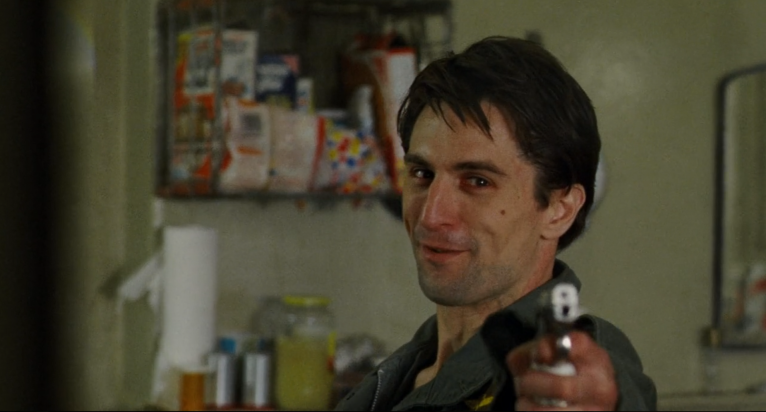
“Film noir” describes a genre of black-and-white American films that dealt with dark themes and deftly used shadows and nocturnal scenes to convey a sense of bleakness and desperation in a world that rarely has happy endings.
Main characters in noir films were typically a hardboiled detective who usually narrates the proceedings, a manipulative femme fatale who attempts to seduce the detective, and a villain who seeks to subvert decent society. None of these characters is essentially good; rather, they are all fleeing the grim hand of fate.
Neo-noir films are distinguishable from classic film noir in the following senses:
- They take place in a modern era where technology threatens to overtake and enslave humans.
- The narrator is often either confused or outright lying.
- Gender roles are far more modern in the sense that female characters are able to redeem themselves without male assistance.
- Color is employed to convey a sense of modernism that’s absent in classic B&W film noir.
- Classic noir tropes are often remodeled and used self-referentially and ironically in this bleak, postmodern framework where, despite technological “progress,” everything is decaying from the inside out.
According to the movie-focused blog I Like Things That Look Like Mistakes:
With neo-noir, the same American nihilism that was prevalent in classic noir is thrust into the contemporary culture filled with materialism, consumerism, technology, and a post-modern use of the styles that influenced today’s cinema. Neo-noir literally means new blackness, the kind of darkness audiences cannot help but explore….In neo-noir, there is no light; there is only darkness.
What follows is a list of influential neo-noir films from the early 1960s to the present.
Shock Corridor (1963)
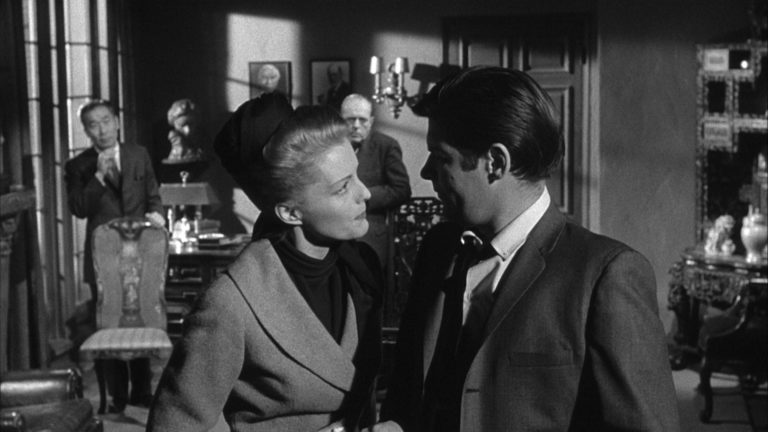
This dark classic by Samuel Fuller is considered the film that launched the neo-noir genre. Although filmed in black and white, it deals with more modern themes such as the brutality of mental asylums and a female main character who makes a living as a stripper but isn’t portrayed as a deviant or mental defective because of it. The plot involves an ambitious journalist named Johnny (Peter Breck), who feigns mental illness in a ploy to have himself committed to an asylum where three witnesses to a murder reside. The film’s struggle revolves around Johnny’s attempts to remain sane and objective while trapped in a mental institution.
Alphaville (1965)
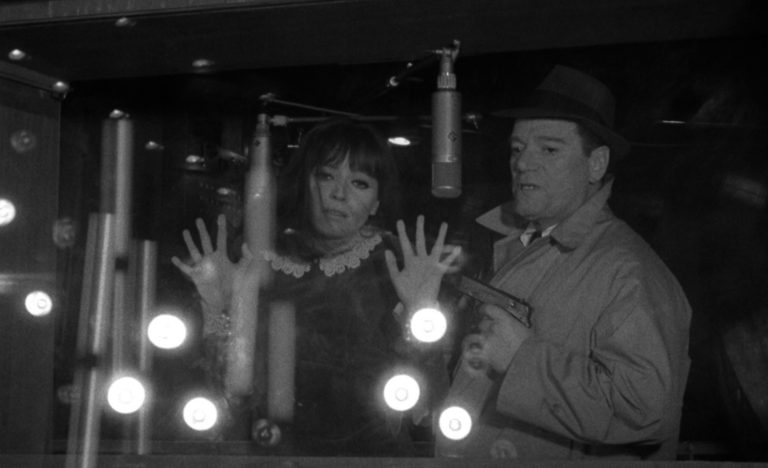
Shot in black and white and employing several classic noir tropes, this sterling example of French New Wave by director Jean-Luc Godard qualifies as neo-noir because it is set in a futuristic world that is ruled by high tech. A computer known as Alpha 60 completely controls French society. An old-school, hardboiled, trenchcoat-wearing detective named Lemmy Caution (Eddie Constantine) is pitted against a totalitarian computer in a metaphor of humans struggling against technology (Godard originally wanted to call the film Tarzan versus IBM.) According to Cinema St. Louis, “The dissonance created by this amalgamation of film noir and science fiction is both befuddling and enticing.”
Point Blank (1967)
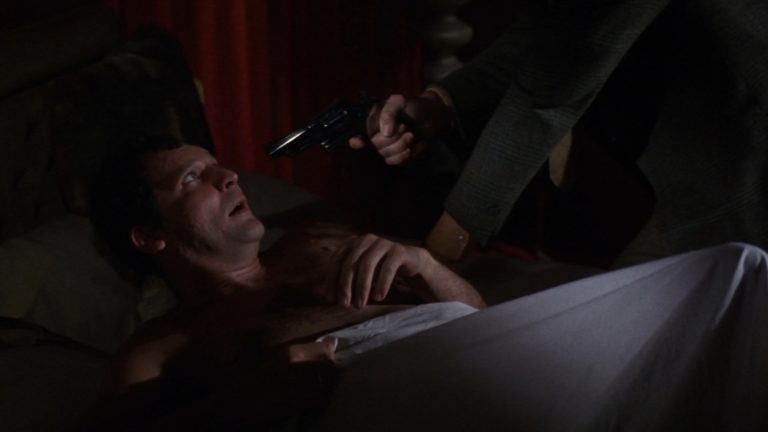
Macho Hollywood leading man Lee Marvin stars as Walker, an old-school tough guy who was defrauded of nearly $100,000 by a criminal cartel known simply as The Organization—and he seeks to get his money back even if he dies in the process. Criminal Element writes, “I believe John Boorman’s 1967 film Point Blank ranks as the best neo-noir ever made.”
The Long Goodbye (1973)
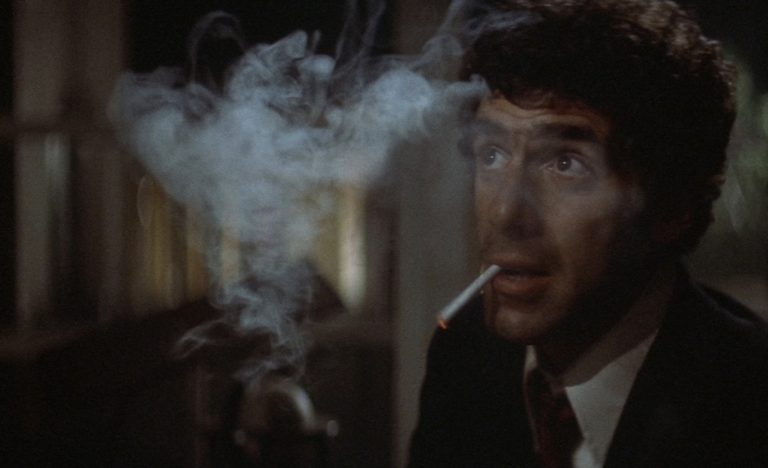
This tour de force by director Robert Altman stars Elliot Gould as Philip Marlowe—a fictional detective created by noir novelist Raymond Chandler who has appeared in several noir films. The screenplay was by Leigh Brackett, who also wrote the classic 1946 noir film The Big Sleep. In this rendering, Marlowe attempts to help a friend out of a tough situation but winds up a murder suspect in the process. Roger Ebert contrasts Elliot Gould’s depiction of private eye Philip Marlowe with previous renderings: “When he awakens at the beginning of the movie, he’s a 1953 character in a 1973 world. He wears a dark suit, white shirt and narrow tie in a world of flower power and nude yoga….The man of honor from 1953 is lost in the hazy narcissism of 1973, and it’s not all right with him.” Movie Fail explains how The Long Goodbye differs from traditional noir films: “The Big Sleep is set in a darker version Los Angeles while The Long Goodbye takes place in a warm, seventies-era LA….For example, the show runners of The Big Sleep would never have approved of Marlowe’s topless neighbors, images of graphic murder and violence, and frequent swearing – all major components of The Long Goodbye.”
Chinatown (1974)
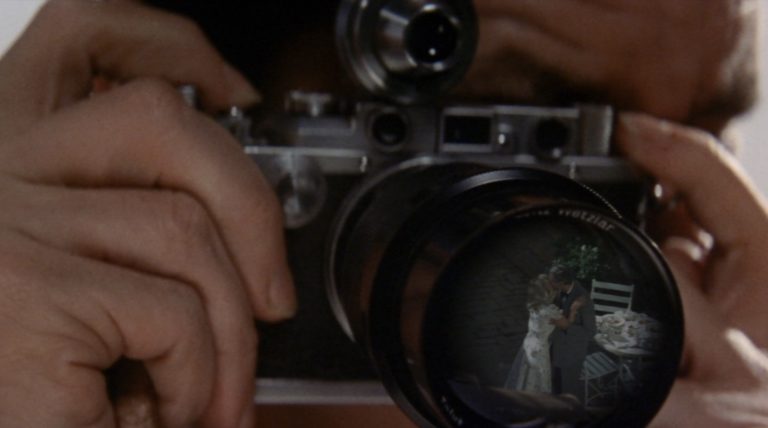
Jack Nicholson stars as a private eye who finds himself in the midst of California’s legendary Water Wars of the 1940s. Director Roman Polanski says he attempted to stay true to the spirit of Raymond Chandler’s noir fiction by shooting the entire story from the perspective of the detective’s character. Roger Ebert suggests that the film would also qualify as a classic noir if it weren’t for the color photography and profanity: “It’s a 1940s private-eye movie that doesn’t depend on nostalgia or camp for its effect, but works because of the enduring strength of the genre itself. In some respects, this movie actually could have been made in the 1940s.”
Taxi Driver (1976)

This legendarily brutal film by director Martin Scorsese stars Robert De Niro as Travis Bickle, a mentally disturbed and rampagingly lonely Vietnam vet from the Midwest who moves to New York, becomes a taxi driver, and finds himself stalking a presidential candidate and attempting to rescue a 12-year-old prostitute named Iris (Jodie Foster). Taxi Driver qualifies as neo noir not only for its graphic depictions of sex and violence, but for its use of color—especially the clashing reds and greens of the traffic lights that haunt Travis’s nighttime excursions in his cab.
Blade Runner (1982)

Based on the Philip K. Dick novel Do Androids Dream of Electric Sheep?, Blade Runner stars Harrison Ford as a detective in a dystopian, degraded, and neon-soaked futuristic LA set in 2019. According to Furious Cinema, “Ridley Scott’s brilliant visual ideas, the astounding cinematography, the set/costume designs and the special FX used in the film created a superb and beautiful neo-noir vision of a Los Angeles of the future….In this future, we see that the city has changed into an industrialized hell.”
To Live and Die in L.A. (1985)

Secret Service agents attempt to track and capture a successful and elusive counterfeiter (Willem Dafoe) through the seedy streets of modern Los Angeles. To Live and Die in L.A. features a car chase scene that uses no special effects and is considered one of the most exhilarating chases in film history. Noir of the Week noted the film’s “fractured and soulless nihilism” before adding that it is “one of the best action films ever made and one of the top 10 crime films of the neo-noir period.”
Who Framed Roger Rabbit (1988)
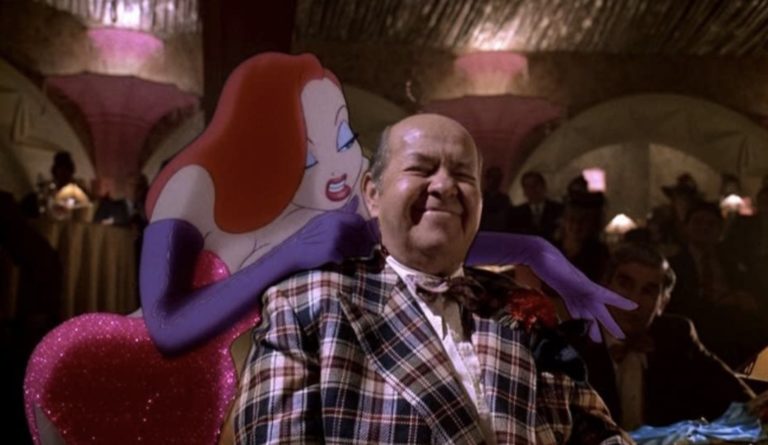
In this caricature of the noir genre, Hollywood is split into the human world and “Toon Town,” where all the animated characters live. In classic noir style, the main character winds up framed for a crime he didn’t commit. Fear, Anxiety, and Paranoia wrote: “The film takes classic elements and themes of film noir and by combining it with modern technology makes Who Framed Roger Rabbit another neo noir classic to remember.”
La Femme Nikita (1990)
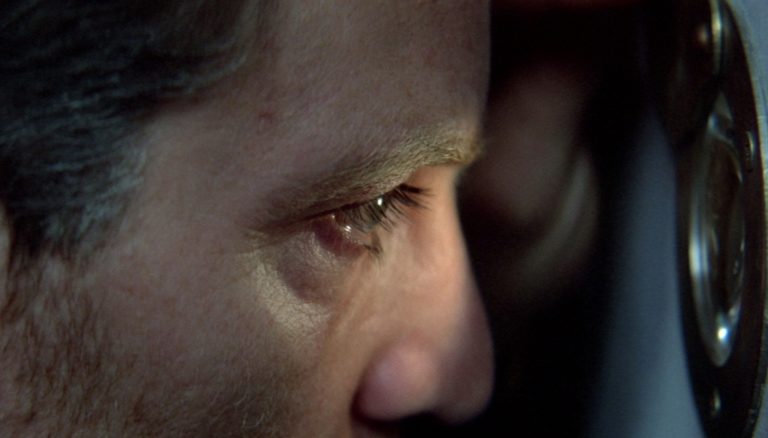
Written and directed by French auteur Luc Besson, La Femme Nikita stars Anne Parillaud as a convicted teenage murderer who his hired by government agents to train as a professional assassin who fights terrorism. Nikita winds up more than qualified and willing to do her job—up until the point where a mission to an embassy goes horribly wrong.
Twin Peaks (1992)
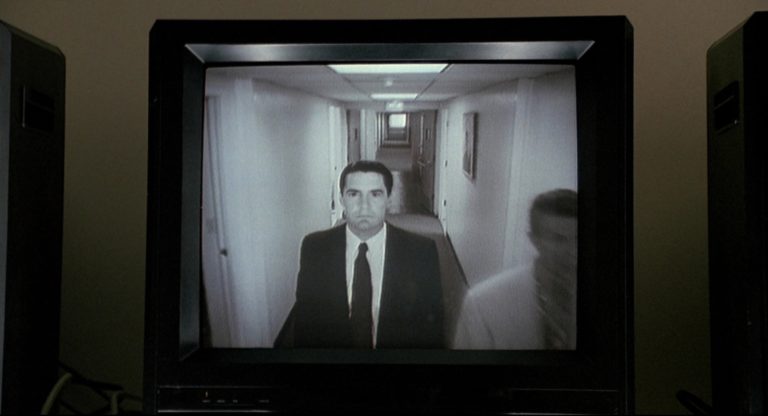
This psychological horror film by surrealist director David Lynch serves as both a prequel and sequel to the wildly successful TV series Twin Peaks, that was set in a fictional town in Washington State where everything seems suffocatingly normal—except for all the murders. Agent Dale Cooper is sent from Philadelphia to Washington State but is unable to find the reason why this tranquil little town is suddenly a hotbed of homicide. Although it employs several classic noir tropes—the hardboiled detective, the femme fatale—Twin Peaks is simply too weird to qualify as film noir and thus fits snugly in the neo-noir category.
Reservoir Dogs (1992)
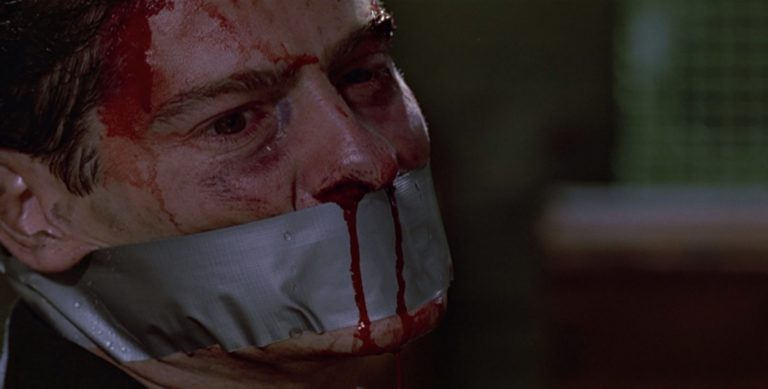
This crime film centering around the events before and after a heist gone wrong marks the feature-length debut of filmmaker Quentin Tarantino. Six men, all identified as pseudonyms involving different colors, recount the details of the heist when it becomes clear the job was a setup. At times brutally violent (some even deem the movie fairly unwatchable), the movie gained notoriety when people began walking out of screenings during the festival season, including Wes Craven and SFX makeup artist Rick Baker, the latter of whom told Tarantino to take the walkout as “a compliment.”
Basic Instinct (1992)
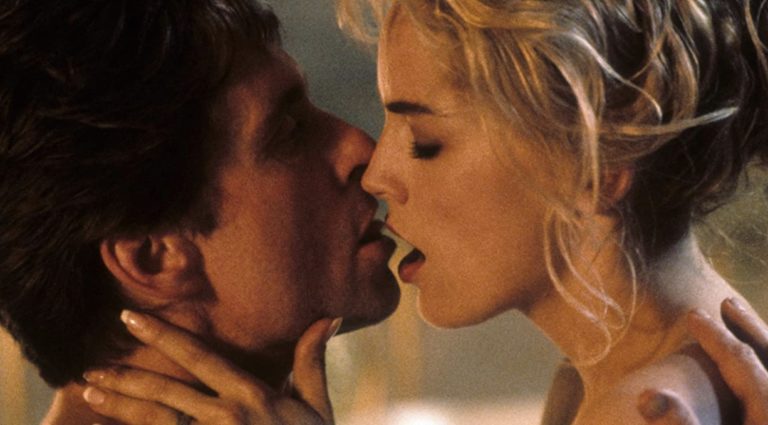
Michael Douglas stars as San Francisco detective Nick Curran, who is assigned to solve the murder of a rock star but finds himself sexually attracted to the prime suspect—Catherine Trammel (Sharon Stone), a novelist whose most recent opus mirrors the rock star’s murder in several disturbing ways. According to a reviewer at IMDb, “Basic Instinct is a brilliant conveyor of noir themes that portrays an unstable detective out of control in an intricate unfathomable plot with a femme fatale, Hollywood mansions, dark shadowy rooms, smart cynical dialogue and smoking.”
Light Sleeper (1992)
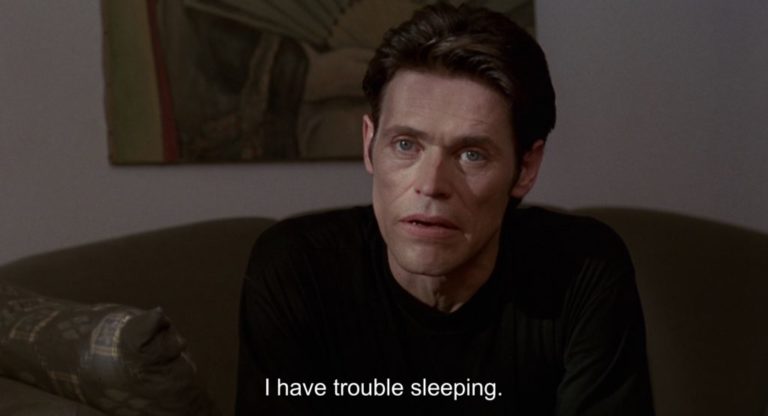
This is the third in writer Paul Schrader’s trilogy of films about desperate loners who hate their jobs—the first two were Taxi Driver (1976) and American Gigolo (1980). Willem Dafoe stars as a drug dealer who reconsiders his profession when an old flame reappears in his life. The Journal of Religion and Film wrote, “Schrader brings conflict to this objective through the use of, and play with, film noir tropes: existentialism, the domestic space, the femme fatale and the pursuing past. As neo-noir hero himself, LeTour attains grace by moving past these elements, by shifting from existential detachment to sacred involvement.”
True Romance (1993)

A pop-culture geek—who is obviously modeled on screenplay writer Quentin Tarantino, who toiled as a video-stop clerk before becoming a director—suddenly finds himself married to a prostitute. He steals cocaine from her pimp, attempts to sell it, and then finds himself targeted by the Mafia. Roger Ebert wrote that “Tarantino creates a world of tough guys, bravado, lurid melodrama, easy women, betrayal, guns and drugs.”
Léon: The Professional (1994)

In this outing from French director Luc Besson, Leon (Jean Reno) is a professional hit man who takes in a 12-year-old girl named Mathilda after the rest of her family gets murdered. Mathilda is already familiar with the criminal life, as her father fenced drugs for police officers. Mathilda also learns the assassin’s trade from Leon as she seeks to avenge her family’s murder.
Pulp Fiction (1994)
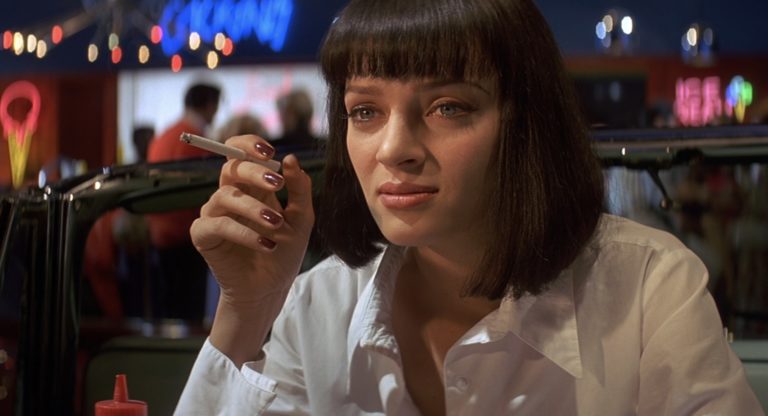
In a film that the Washington Post described as “brilliant and brutal, funny and exhilarating, jaw-droppingly cruel and disarmingly sweet,” director and screenwriter Quentin Tarantino weaves the tales of hitmen, a boxer, a gangster, and two low-level bandits into “four tales of violence and redemption.” A review in Noir Whale says that Tarantino “seems to break cleanly with the cliches of film noir history,” especially since Pulp Fiction doesn’t have any cops but has a postmodern, ironic sense of humor that was nonexistent in the 1940s and 50s.
The Usual Suspects (1995)
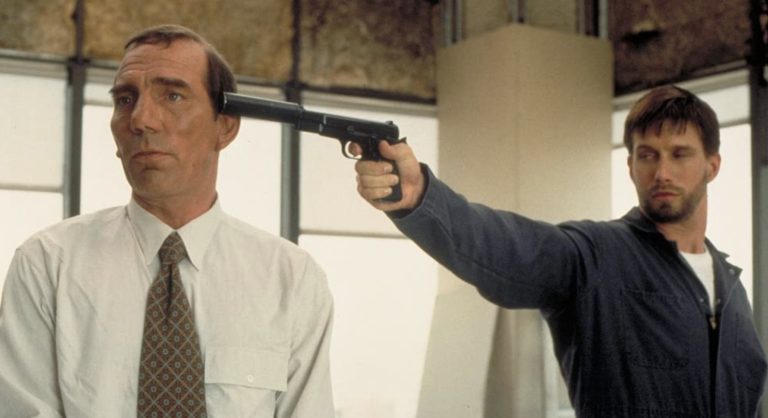
Centering around a gun battle on a boat, The Usual Suspects stars Kevin Spacey as “Verbal,” the battle’s sole survivor, who recounts the events leading up to the battle and blames them on a mysterious man named Keyser Söze. But in the end it’s all a ruse to cover the fact the Verbal is the culprit behind the gun battle. An IMDb reviewer says that director Bryan singer and writer Christopher McQuarrie “show a perfect master in the domain of the film noir: an ominous atmosphere, nocturnal scenes which stay rooted in the mind and a deep psychology of certain characters which give more substance to the film.”
SE7EN (1995)
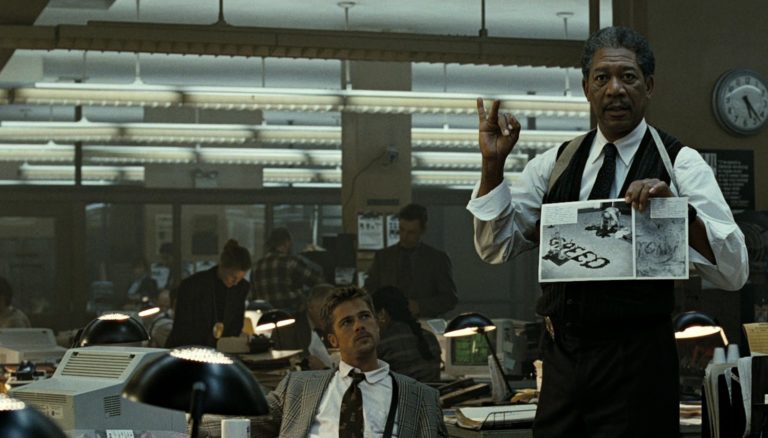
Detectives William Somerset (Morgan Freeman) and David Mills (Brad Pitt) seek to capture a serial killer who selects his victims based on whether or not they committed one of the Seven Deadly Sins. Reel Views writes that “Seven may always be grim, dark, and rainy, but at least there’s a little substance beneath the atmosphere.”
Fargo (1996)
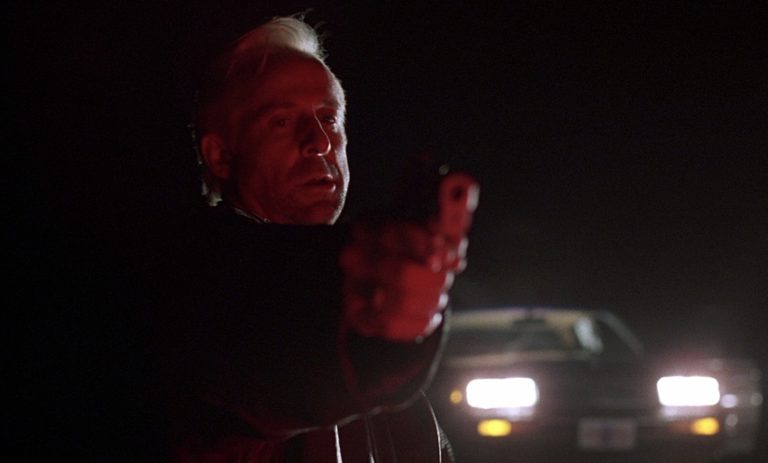
Based loosely on a true story, Fargo employs several classic noir tropes—a murder mystery amid seedy settings—but upends the genre by setting the film in mostly rural areas that are immune from urban decadence, casts the detective as a pregnant and overwhelmingly wholesome pregnant female cop (Frances McDormand, who won an Oscar for her portrayal as Marge Gunderson), and mostly setting the film in the daytime, where snow is so ubiquitous as to be nearly blinding.
Jackie Brown (1997)

Based very loosely on classic noir author Elmore Leonard’s book Rum Punch, Jackie Brown is Quentin Tarantino’s full-length homage to the blacksploitation trend of the 1970s and stars that genre’s alpha female Pam Grier in the title role. Noir of the Week wrote that “Though [Tarantino has] always insisted he doesn’t ‘do neo-noir’, he obviously recognized Rum Punch’s story for what it was – not just some screwball, comedic affectation but something real and raw and human that also was funny.”
The X-Files (1998)

David Duchovny and Gillian Anderson reprise their TV roles as FBI agents Fox Mulder and Dana Scully in this cinematic treatment of two renegade detectives who find themselves pitted against the weight of the US government as they seek to find the truth about an alien invasion of Earth. Roger Ebert notes that although the themes are futuristic, The X-Files depends heavily on classic noir tropes: “this is a movie that depends on surface, on mystery, on atmosphere, on vague hints and murky warnings.”
Twilight (1998)
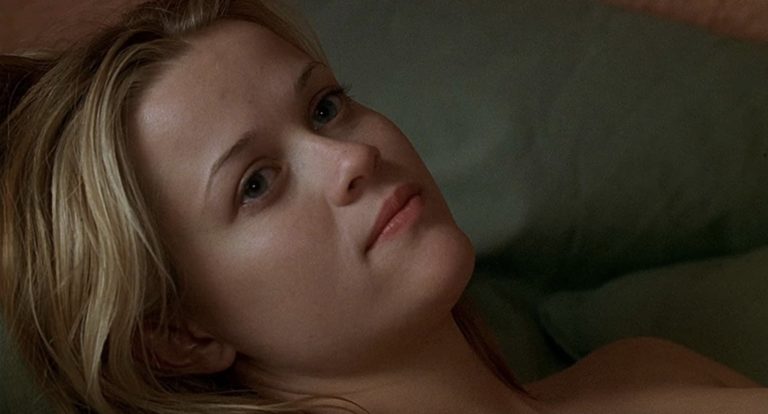
In this LA-based private-eye film, Paul Newman stars as a washed-up alcoholic detective who becomes entangled with a vain movie queen named Catherine Ames (Susan Sarandon). The Los Angeles Times wrote that Twilight “represents the flowering of that inevitable subgenre: geezer noir….You know you’re watching geezer noir when the protagonists make small talk about their prostates, not platinum blondes.”
The Matrix (1999)

Keanu Reeves stars as Neo, a software author by day who plunges into the world of hacking by night. He is recruited by hackers led by Morpheus (Morgan Freeman), who teaches Neo that the entire world is a lie dictated by a power structure known as The Matrix. In an analysis of the film’s neo-noir underpinnings, Grin.com noted that “Not until that very ‘fugitive on the run’ fights back and escapes by implementing some rather incredulous astonishing fighting, we realize that this movie is not going to be in the past but in the future.”
Fight Club (1999)

Based on the novel by Chuck Pahlaniuk, Fight Club is an examination of modern male alienation and the quest to find redemption through masculine displays of violence. According to film critic Jans B. Wager, Fight Club employs several film noir tropes such as a white male protagonist—in this case, Edward Norton—who narrates the events. He finds himself entangled in an “erotic triangle” with a femme fatale (Marla Singer) and a male antagonist (Brad Pitt). But the film differs from traditional noir in that the female characters is clearly in charge—“in the driver’s seat,” according to Wager—and the main characters are upper-middle-class rather than working-class.
Memento (2000)

Director Christopher Nolan’s film centers around a man with short-term memory loss that is so severe, he has several reminders tattooed onto his own body. He has to track down and deliver justice to his wife’s murderer while desperately struggling with the fact that he might not even remember delivering justice. The film is shot in both color and black and white—the color sequences are presented in dreamy reverse chronological order, while the black-and-white sequences proceed logically and are firmly rooted in the real world.
American Psycho (2000)

Based on the Bret Easton Ellis novel that was mainly a critique of rampant 1980s narcissistic consumerism, American Psycho centers around Patrick Bateman (Christian Bale), an opportunistic finance capitalist by day and serial murderer by night. Movie Scene explains that “American Psycho is not a prototypical neo-noir, and seems more characteristic of horror, with its sadistic violence and generous amount of gore. However, the film’s inherent pessimism, satirical cynicism towards yuppie culture, and fatalism for its protagonist makes it a veritable qualifier for the sub-genre.”
Kill Bill Volume 1 & 2 (2003-2004)
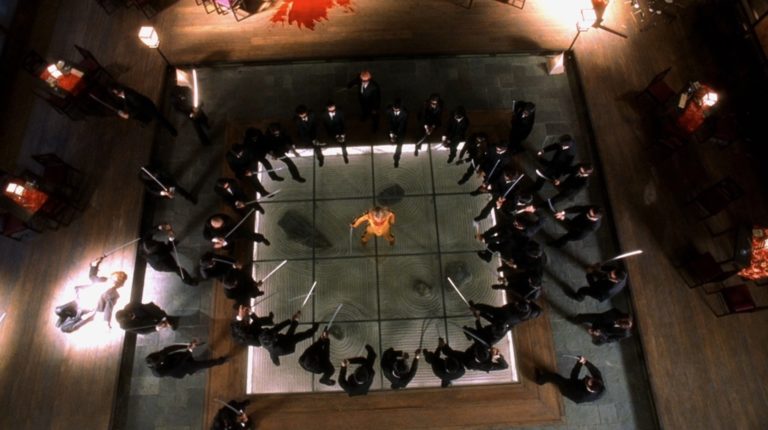
Quentin Tarantino’s two-part homage to classic Hong Kong action movies stars Uma Thurman as “The Bride,” a former assassin who awakes from a four-year coma and seeks revenge against former cohorts who betrayed her. Although dependent on several classic noir tropes, Kill Bill subverts the old genre by making the protagonist a violent, ass-kicking woman.
Brick (2005)
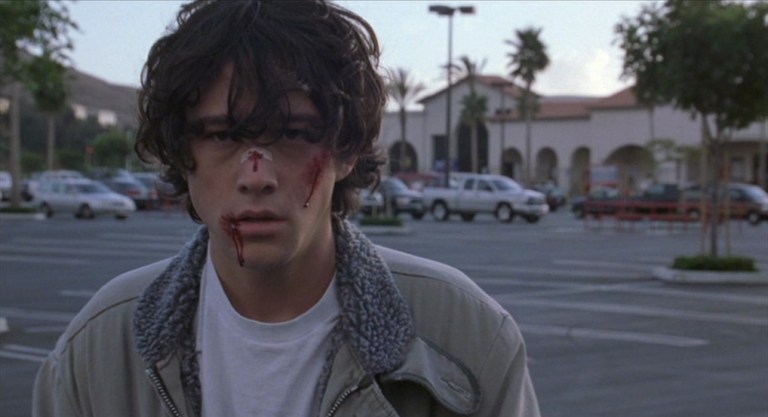
Brick takes a hardboiled detective film-noir and transposes into a modern setting populated by high-school students. When Brendan Frye discovers the dead body of his ex-girlfriend Emily, he takes it upon himself to uncover the truth about what happened to her. His investigation leads him into the seedy underbelly of high-school life involving drugs, secrets, and murder. Brick is supremely engaging with its classic noir trappings and its anachronistic dialogue that feels like it was ripped from the pages of a Dashiell Hammett novel.
Sin City (2005)
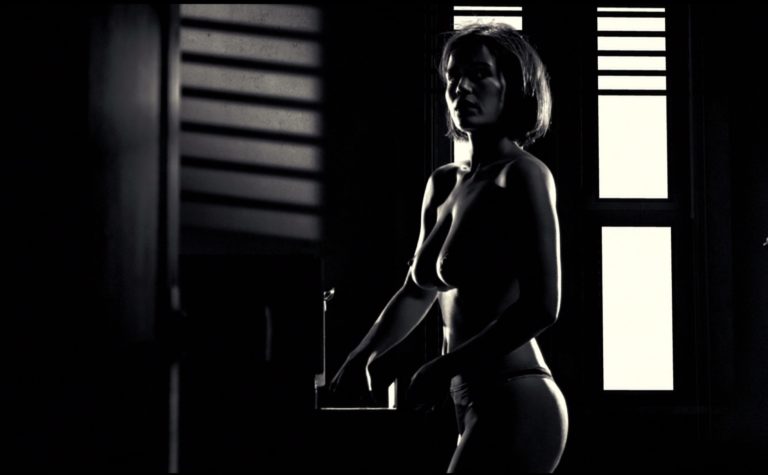
Frank Miller’s series of Sin City graphic novels were inspired by hardboiled novels from the 1930s and 1940s as well as the classic Hollywood gangster movies starring tough guys such as Humphrey Bogart and James Cagney. To make this film, he teamed up with director Robert Rodriguez to film five separate stories all joined together by the seedy decadence of modern Sin City: The Customer Is Always Right (Part I), That Yellow Bastard (Part I) The Big Fat Kill, That Yellow Bastard (Part II), and The Customer Is Always Right (Part II). Miller and Ramirez worked from storyboards and shot most of the film against a green screen.
Kiss Kiss Bang Bang (2005)
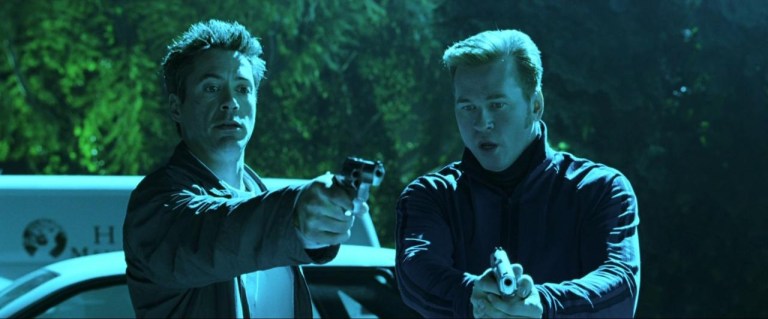
Kiss Kiss Bang Bang is a criminally underrated neo-noir comedy from Shane Black in his directorial debut. The film stars Robert Downey Jr. as an actor who becomes entangled in a murder conspiracy after shadowing a private investigator (played by Val Kilmer) for research for a movie role. It’s a hardboiled narrative taken to hilarious extremes.
The Dark Knight Trilogy (2005-2012)
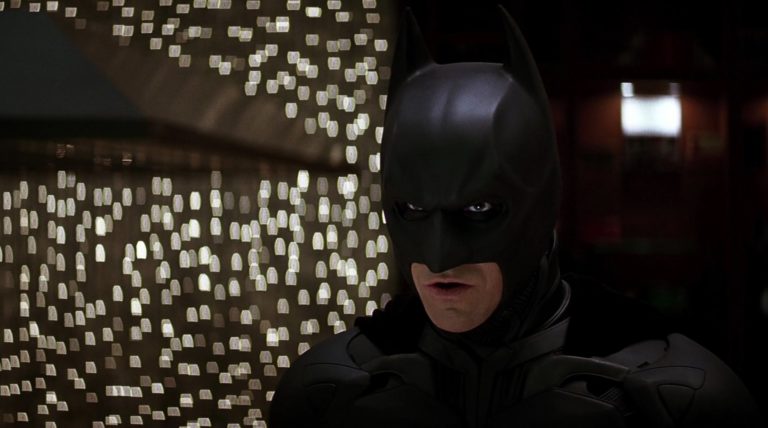
In this trilogy—Batman Begins (2005), The Dark Knight (2008), and The Dark Knight Rises (2012)—director Christopher Nolan pits a noble but flawed Batman against the dark forces who rule Gotham City. Kristopher Purnell wrote that “Nolan’s The Dark Knight trilogy is a great example of neo-noir, because of how it depicts the comic-based society of Gotham – thematically and production-wise – and how Batman wishes to defend it of contemporary criminality, that is, corruption and terrorism (which can be directed to the American-ization of noir).”
The Black Dahlia (2006)
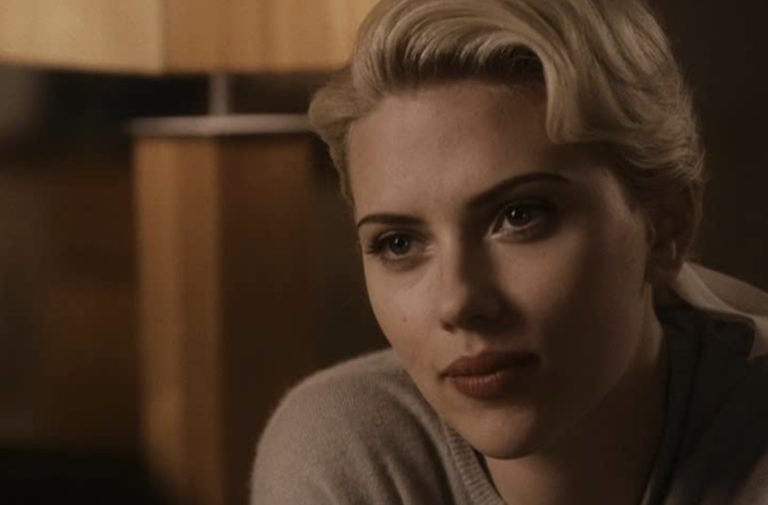
Elizabeth Short was an aspiring actress whose dismembered body was found in Los Angeles in 1947 in an infamous case which has never been solved. She became known as “The Black Dahlia”—a moniker lifted from a 1946 noir murder mystery called The Blue Dahlia. Latter-day LA-fixated noir novelist James Ellroy wrote a book about the Black Dahlia murder in 1987, and Brian De Palma based this film on Ellroy’s book. The Austin Chronicle wrote that “There hasn’t been a studio-produced American noir as gorgeous as this that has made as little sense as this since Howard Hawks’ splendid muddlement of Raymond Chandler’s The Big Sleep.”
Gone Baby Gone (2007)
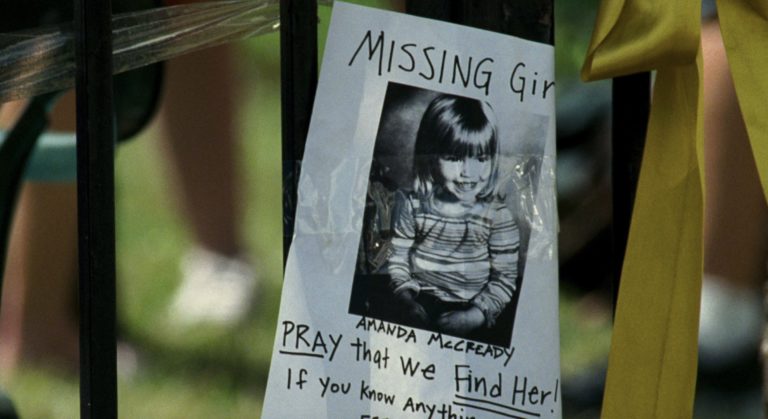
In Ben Affleck’s directorial debut, his brother Casey and Michelle Monaghan star as two private eyes who are tasked to investigate the kidnapping of a young girl from her single mom’s apartment in the seedy Boston neighborhood of Dorchester. The Oncoming Hope described the film as a prime example of “how to make noir more naturalistic.”
Zodiac (2007)
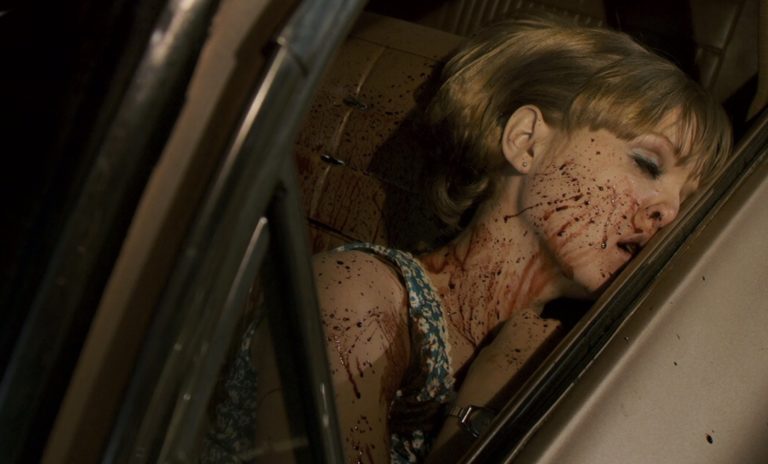
Set in the summer of 1969 leading all the way to 1983, Zodiac tells the true horror story of the hunt for the Zodiac Killer, one of America’s most prolific unsolved serial-murder cases. It focuses on Robert Graysmith, a cartoonist turned amateur detective who was able to piece together the case better than any of the San Francisco detectives assigned to the case. Calling the film “a puzzle riddled with holes,” a reviewer for the San Francisco Chronicle wrote that “For all its flaws, Zodiac deserves praise for not choosing the easy route.”
In Bruges (2008)

After a hit that they completely botched, two guilt-ridden hitmen huddle in the town of Bruges, Belgium—a place where hitman Ray (Colin Farrell) wishes he never visited. The Village Voice panned the film: “All the proletarian poetry in the world can’t save this movie from its blurry mess of mixed motives. Its pretensions to moral inquiry are muddled, even fraudulent, implying that it’s OK to carry out a contract on a priest, but a chorister is a whole other ball of wax.”
Inception (2010)
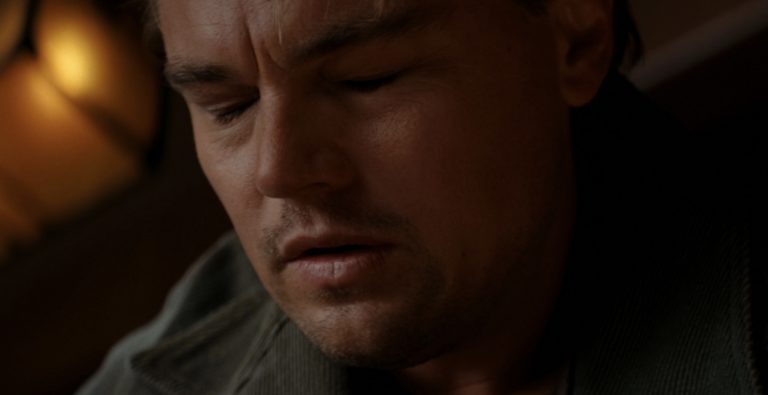
Employing flashbacks and dream sequences in this tale of a thief who steals dream-sharing technology, director Christopher Nolan drags this film out of the classic noir genre by dint of its futuristic themes alone. Kristofer Purnell writes, “As a perfect example of neo-noir, Inception fully cements Nolan’s place as an auteur in the neo-noir genre. The aspects he incorporates in the film are recognizable as neo-noir, with attributions to film noir, and are equally recognized as Nolan signature pieces of work.”
Shutter Island (2010)
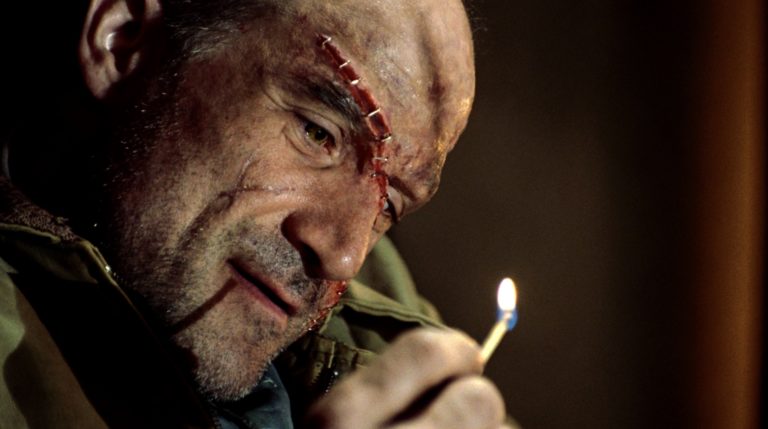
In this massively successful neo-noir by Martin Scorsese, Leonardo Dicaprio and Mark Ruffalo star as US Marshals who in 1954 are assigned to investigate a murder case involving a suspect who fled the foreboding Shutter Island’s hospital for the criminally insane. Roger Ebert writes of Shutter Island: “Scorsese showed his actors the great 1947 noir Out of the Past, whose very title is a noir theme: Characters never arrive at a story without baggage. They have unsettled issues, buried traumas.”
The Place Beyond The Pines (2012)

Ryan Gosling stars as a motorcycle stuntman who begins robbing banks to provide for his girlfriend (Eva Mendes) and their newborn child—and they both find their lives falling apart as a result. Calling it “a self-confident, self-aware, almost cocky piece of filmmaking,” Richard Roeper notes that The Places Beyond the Pines employs classic noir devices such as the extended tracking shot and leaves the viewer “immersed in a world of crooked police officers and life-changing moral dilemmas.”
Nightcrawler (2014)

As film genres, film noir and neo-noir examine the darker sides of humanity and society. Nightcrawler is a pitch-black look at journalism and its role as media produced for mass consumption. Lou Bloom is a small-time thief who sees a new money-making opportunity in freelance journalism. Understanding that sensationalism sells, Bloom grows increasingly daring as he learns to live by the motto of “if it bleeds, it leads,” even if that means that the action he takes to record newsworthy footage crosses moral, ethical, and criminal lines.
Nightmare Alley (2021)
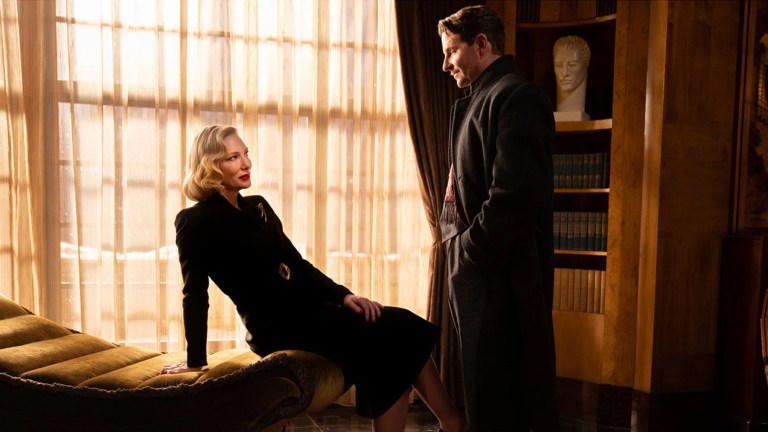
Guillermo del Toro directed this neo-noir psychological thriller which is a remake of the 1947 noir film of the same name. Originally set for Leonardo DiCaprio to star, Bradley Cooper signed on when they weren’t able to offer Leo enough money. Cooper plays Stanton Carlisle, a man who takes a job with a traveling carnival and soon makes his own way as a talented cold reader until he manipulates the wrong people. Guillermo del Toro said he was interested in telling a story about fake psychics because when his father was kidnapped in Mexico in 1998, his family was besieged by fake psychics trying to make money off of his family’s tragedy.
The John Wick Franchise (2014-2023)
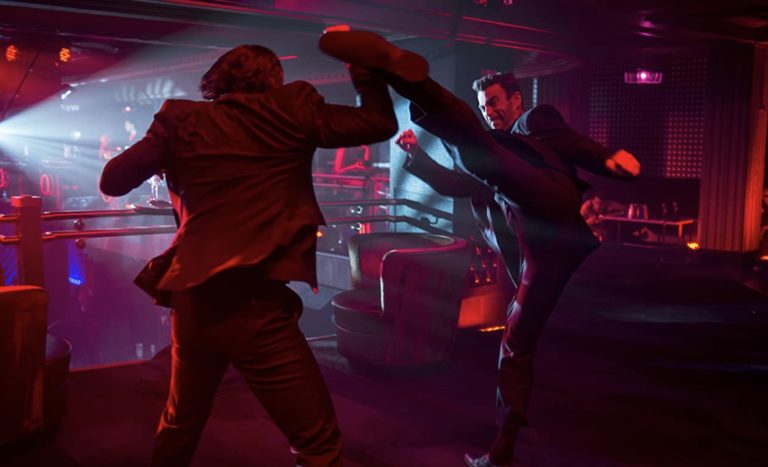
Keanu Reeves stars as John Wick, a righteous man who recently lost his wife and who seeks vengeance against the man who killed his dog and stole his car. An extended analysis in Film Matters Magazine notes the “use of color, dark clothing aesthetic, guns, and violence” in the franchise’s first installment and how the “dull, desaturated color” in the opening scenes “mirror the newfound emptiness John now feels after his wife’s death.” As of 2023, there were three films in the series: John Wick (2014), John Wick: Chapter 2 (2017), John Wick: Chapter 3 – Parabellum (2019), and John Wick: Chapter 4 (2023).